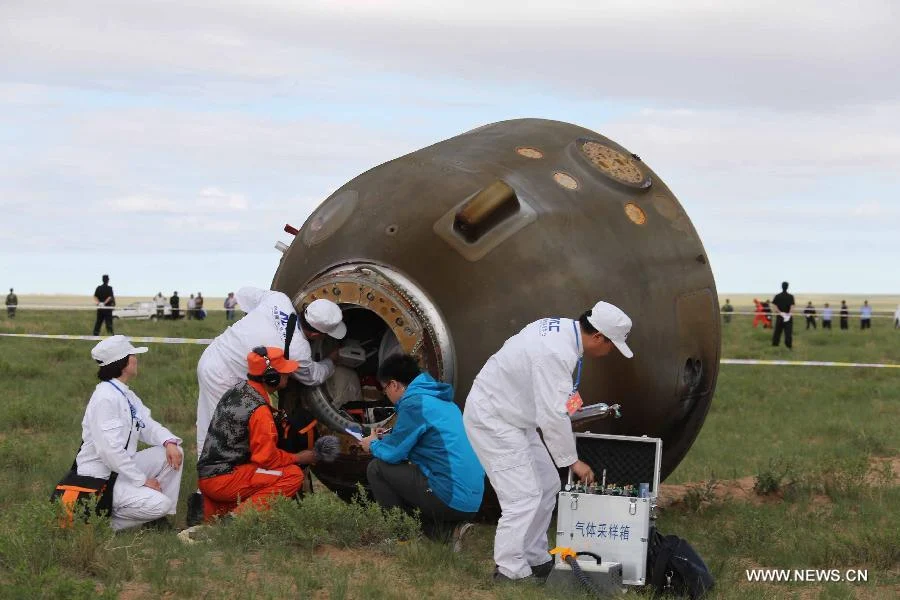Landing of China's new spacecraft on May 8. China's new and as yet unnamed spacecraft safely returned to Earth on Friday after...
 |
| Landing of China's new spacecraft on May 8. |
For China this was a historic flight, sending an uncrewed prototype of its next-generation spacecraft to an altitude of 8,000km. The mission also served to test a new variant of the country's most powerful rocket, the Long March 5B, which also was deemed a success. According to Space News, the spacecraft's reentry velocity was 9km/s as it approached from a higher orbit. This is on par with the high-speed return made by NASA's Orion spacecraft during its uncrewed Exploration Flight Test-1 mission in 2014, when the capsule reached a peak altitude of 5,800km.
China has not outlined, in detail, the scope of its ambitions for human exploration during the next decade. However, it plans to use its new Long March 5B rocket to construct a modular space station in low-Earth orbit over the next two to three years. One version of this new spacecraft, with a mass of 14 tons and a striking resemblance to SpaceX's Crew Dragon, is likely to play a role in delivering up to six crew members at a time into space for that purpose.
In addition, the China Aerospace Science and Technology Corp. now also has a vehicle capable of taking humans into deep space—and possibly to the Moon. The reentry velocity for a spacecraft returning from the Moon is just under 11km/s. And a larger version of this spacecraft, with a mass of more than 21 tons, is being designed for this purpose.
China has said it wants to eventually build an outpost on the Moon, although it has been vague about when—citing dates both of around 2030 as well as later in that decade for sending taikonauts to the lunar surface. The country has not yet publicly declared whether such an endeavor would happen with a combination of the Long March 5B rocket, a larger Long March 9 under development, or some other heavy lift booster.
What does seem clear is that China is steadily accumulating the pieces of an architecture that could see the country's influence extend into cislunar space, and down to the lunar surface, over the next decade
 |
| China celebrates success as a new deep-space capsule returned to earth for the 1st test flight. |
In addition, the China Aerospace Science and Technology Corp. now also has a vehicle capable of taking humans into deep space—and possibly to the Moon. The reentry velocity for a spacecraft returning from the Moon is just under 11km/s. And a larger version of this spacecraft, with a mass of more than 21 tons, is being designed for this purpose.
China has said it wants to eventually build an outpost on the Moon, although it has been vague about when—citing dates both of around 2030 as well as later in that decade for sending taikonauts to the lunar surface. The country has not yet publicly declared whether such an endeavor would happen with a combination of the Long March 5B rocket, a larger Long March 9 under development, or some other heavy lift booster.
What does seem clear is that China is steadily accumulating the pieces of an architecture that could see the country's influence extend into cislunar space, and down to the lunar surface, over the next decade







